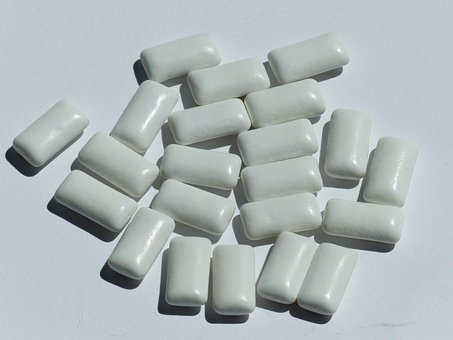Gum is a type of confectionery that people chew to freshen their breath, clean their teeth, and for enjoyment. The earliest forms of gum were made from natural latex and resins from trees. Today, gum is produced using a variety of synthetic and natural ingredients.
What is Veganism?
Veganism is a lifestyle that seeks to exclude the use of animals for food, clothing, or any other purpose. Veganism has gained popularity in recent years as people become more conscious of animal welfare and environmental concerns.
To be considered vegan, a product must not contain any animal-derived ingredients or by-products. This includes meat, dairy, eggs, honey, and any other products that come from animals.
Ingredients Used in Gum
The main ingredients in gum include a gum base, sweeteners, flavorings, and fillers. Some gum brands also contain additives like colors, preservatives, and antioxidants.
Gelatin in Gum
Gelatin is a protein that is derived from the skin, bones, and connective tissues of animals like cows, pigs, and fish. It is commonly used as a gelling agent in food products like jelly, marshmallows, and gummy candies.
While some gum brands may use gelatin in their products, there are vegan-friendly alternatives available like plant-based gums and gum bases made from chicle or other natural resins.
Sugar in Gum
Sugar is a common ingredient in gum and is used to provide sweetness and flavor. However, not all types of sugar are vegan-friendly. Some sugars are processed with bone char, which is made from the bones of cattle. Vegan alternatives to sugar in gum include beet sugar, cane sugar, and organic sugar.
Artificial Sweeteners in Gum
Many gum brands use artificial sweeteners like aspartame, sucralose, and acesulfame potassium to provide sweetness without adding calories. These sweeteners are generally considered vegan-friendly as they are synthesized in a lab and do not come from animal sources.
Environmental Impact of Gum
Gum is a popular product, but its consumption and disposal have significant environmental impacts. Chewing gum is often discarded improperly, leading to litter and pollution. Traditional gum is made from synthetic materials that are non-biodegradable, which means that they do not break down naturally and contribute to waste accumulation. However, some gum brands have started using biodegradable materials and environmentally-friendly packaging to reduce their impact on the environment.
History of Gum
Gum has been chewed by humans for thousands of years, with evidence of chewing gum found in ancient civilizations like the Greeks, Mayans, and Native Americans. In ancient times, gum was made from natural resins and was chewed for its medicinal and hygiene benefits. Modern gum has evolved significantly, with a wide range of flavors and formulations available in the market today.
Benefits of Chewing Gum
Chewing gum can provide several benefits beyond freshening breath. Studies have shown that chewing gum can help reduce stress, improve focus and memory, and aid in digestion. Additionally, chewing gum can help prevent tooth decay by stimulating the production of saliva, which neutralizes acids and bacteria in the mouth.
Risks of Chewing Gum
While there are many benefits to chewing gum, there are also some risks associated with excessive gum consumption. Chewing gum for long periods can lead to jaw pain and TMJ disorders, which affect the temporomandibular joint that connects the jawbone to the skull. Additionally, gum that contains sugar can contribute to tooth decay, and overconsumption of sugar-free gum can cause digestive issues like bloating and diarrhea.
These paragraphs provide additional context and information about gum, ranging from its history and benefits to potential risks and environmental impact. By understanding the different aspects of gum, we can make informed choices about the products we consume and their impact on our health and the environment.
Natural Flavorings in Gum
Natural flavorings are derived from plant or animal sources and are used to provide flavor to gum. While some natural flavorings may come from animal sources, there are vegan-friendly alternatives available like fruit extracts and natural essential oils.
Production of Gum
Gum is produced through a complex manufacturing process that involves mixing the gum base, sweeteners, flavorings, and fillers together in a large mixing machine. The resulting mixture is then rolled out, cut into small pieces, and packaged for sale.
While some additives like colors and preservatives may be added during the manufacturing process, there are vegan gum options available that do not use any animal-derived ingredients.
Conclusion
After thorough research, we can conclude that gum can be vegan-friendly depending on the brand and ingredients used. Many gum brands use vegan-friendly ingredients like plant-based gum base and natural sweeteners and flavorings. However, some brands may use non-vegan ingredients like gelatin and bone-char processed sugar.
If you are a vegan or seeking to follow a vegan lifestyle, it is important to read the ingredients list on gum packages carefully to ensure that they do not contain any animal-derived ingredients. Additionally, there are several vegan gum brands available in the market that use only vegan-friendly ingredients.

